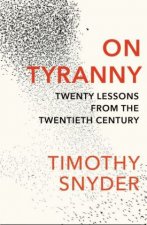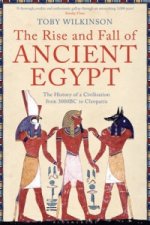
Code: 09238647
Stitching the World: Embroidered Maps and Women's Geographical Education
by Judith A. Tyner
From the late eighteenth century until about 1840, schoolgirls in the British Isles and the United States created embroidered map samplers and even silk globes. Hundreds of British maps were made and although American examples are ... more
- Language:
 English
English - Binding: Hardback
- Number of pages: 196
Publisher: Taylor & Francis Ltd, 2015
- More about this

You might also like
-

Fluorometric Analysis in Biomedical Chemistry
387.88 € -

Help Them Learn a Language Deeply - Francois Victor Tochon's Deep Approach to World Languages and Cultures
49 € -2 % -

All Military Vehicles of the United States (1952)
82.75 € -7 % -

Paare. Bd.2
28.82 € -10 % -

Die 30 besten Kindergartenlieder 2
9.73 € -4 %
Give this book as a present today
- Order book and choose Gift Order.
- We will send you book gift voucher at once. You can give it out to anyone.
- Book will be send to donee, nothing more to care about.
More about Stitching the World: Embroidered Maps and Women's Geographical Education
You get 481 loyalty points
 Book synopsis
Book synopsis
From the late eighteenth century until about 1840, schoolgirls in the British Isles and the United States created embroidered map samplers and even silk globes. Hundreds of British maps were made and although American examples are more rare, they form a significant collection of artefacts. Descriptions of these samplers stated that they were designed to teach needlework and geography. The focus of this book is not on stitches and techniques used in 'drafting' the maps, but rather why they were developed, how they diffused from the British Isles to the United States, and why they were made for such a brief time. The events of the late eighteenth and early nineteenth centuries stimulated an explosion of interest in geography. The American and French Revolutions, the wars between France and England, the War of 1812, Captain Cook's voyages, and the explorations of Lewis and Clark made the study of places exciting and important. Geography was the first science taught to girls in school. This period also coincided with major changes in educational theories and practices, especially for girls, and this book uses needlework maps and globes to chart a broader discussion of women's geographic education. In this light, map samplers and embroidered globes represent a transition in women's education from 'accomplishments' in the eighteenth century to challenging geographic education and conventional map drawing in schools and academies of the second half of the nineteenth century. There has been little serious study of these maps by cartographers and, moreover, historians of cartography have largely neglected the role of women in mapping. Children's maps have not been studied, although they might have much to offer about geographical teaching and perceptions of a period, and map samplers have been dismissed because they are the work of schoolgirls. Needlework historians, likewise, have not done in depth studies of map samplers until recently. Stitching the World is an interdisciplinary work drawing on cartography, needlework, and material culture. This book for the first time provides a critical analysis of these artefacts, showing that they offer significant insights into both eighteenth- and nineteenth-century geographic thought and cartography in the USA and the UK and into the development of female education.a (TM)
 Book details
Book details
Book category Books in English Humanities History History: earliest times to present day
190.82 €
- Full title: Stitching the World: Embroidered Maps and Women's Geographical Education
- Author: Judith A. Tyner
- Language:
 English
English - Binding: Hardback
- Number of pages: 196
- EAN: 9781409426356
- ISBN: 1409426351
- ID: 09238647
- Publisher: Taylor & Francis Ltd
- Weight: 434 g
- Dimensions: 163 × 242 × 18 mm
- Date of publishing: 28. March 2015
Trending among others
-

Guns, Germs, and Steel
16.76 € -

Illustrated Encyclopedia of Uniforms of World War I
20.68 € -26 % -

Histories
5.31 € -28 % -

The Art of Combat
28.61 € -18 % -

Anunnaki Homeworld
16.86 € -19 % -

Fear and Loathing on the Campaign Trail '72
13.25 € -28 % -

Pakistan: A Hard Country
16.66 € -24 % -

Swerve
11.24 € -8 % -

This Kind of War
25.50 € -23 % -

Swedish Army of the Great Northern War, 1700-1721
25.10 € -28 % -

M3 Infantry Half-Track 1940-73
11.84 € -35 % -

Jack and LEM
18.77 € -17 % -

Inside the Clinton White House
24.80 € -23 % -

Armies of the Dark Ages
36.85 € -2 % -

Roman Standards & Standard-Bearers (1)
15.16 € -28 % -

Pearson Baccalaureate: History Causes and Effects of 20th-century Wars 2e bundle
59.05 € -

Peloponnesian War
14.85 € -28 % -

On Tyranny
9.83 € -26 % -

Rise and Fall of Ancient Egypt
17.16 € -28 % -

From Third World to First
14.05 € -24 % -

King Leopold's Ghost
13.25 € -15 % -

Spartans
14.35 € -22 % -

Medieval Combat in Colour
25.10 € -28 % -

Gallic War
8.53 € -23 % -

Postwar
16.46 € -25 % -

Underground
10.94 € -23 % -

Complete Roman Army
20.18 € -28 % -

Age Of Capital
15.16 € -28 % -

Age Of Extremes
17.16 € -21 % -

Shake Hands With The Devil
15.06 € -18 % -

Deng Xiaoping and the Transformation of China
32.83 € -

Victorian Lady's Guide to Fashion and Beauty
16.26 € -32 % -

Sumerian Mythology
23.99 € -6 % -

Truman
17.77 € -25 % -

Making Medieval Manuscripts
17.26 € -18 % -

Yoga Body
18.77 € -10 % -

Fall of Yugoslavia
11.24 € -28 % -

Electric Kool-Aid Acid Test
10.94 € -23 % -

Chernobyl Prayer
10.64 € -25 % -

Who Paid The Piper?
13.25 € -28 % -

Caesar
18.67 € -22 % -

Age Of Empire
16.56 € -21 % -

Armies of the Late Roman Empire AD 284 to 476
27.81 € -21 % -

The Shah
22.39 € -16 % -

Pol Pot
15.16 € -28 % -

Access to History: War and Peace: International Relations 1890-1945 Fourth Edition
34.74 € -

Historical and Chronological Context of the Bible
43.38 € -

Varangian Guard 988-1453
14.55 € -27 % -

Infidel
11.04 € -18 %
Collection points Bratislava a 2642 dalších
Copyright ©2008-24 najlacnejsie-knihy.sk All rights reservedPrivacyCookies



 15549 collection points
15549 collection points Delivery 2.99 €
Delivery 2.99 € 02/210 210 99 (8-15.30h)
02/210 210 99 (8-15.30h)